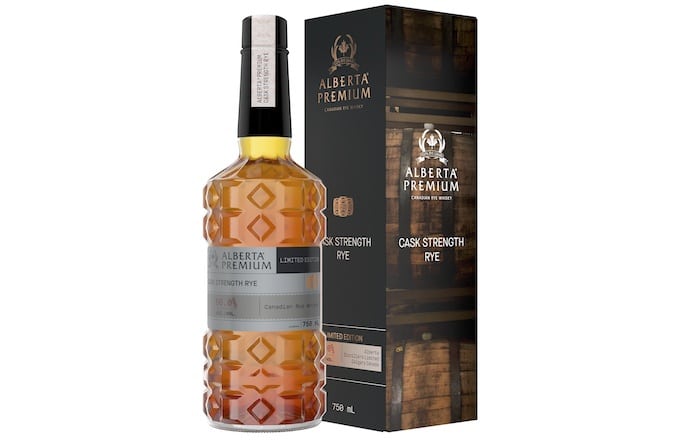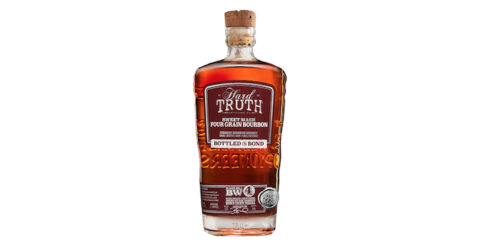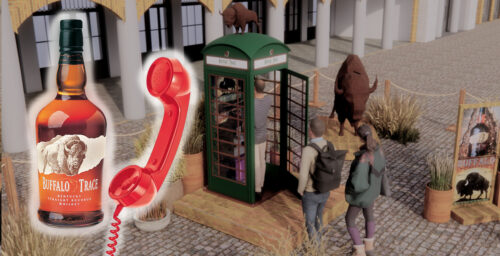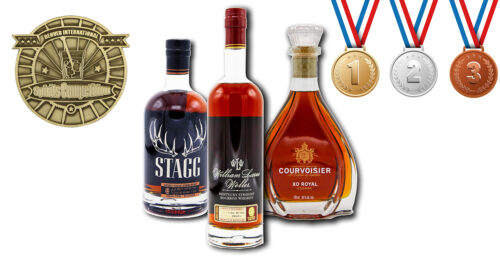While we talked about how British Columbia is the craft whisky hub of Canada, Alberta is the antithesis. Though the two provinces border each other—British Columbia above Washington and Alberta above Idaho and Montana—the whisky scenes are wildly different.
While British Columbia’s distilling scene is almost entirely craft producers, Alberta is ruled over by major players like Alberta Distillers Limited (ADL). Based out of Calgary, the distilling operation peddles 100% rye whiskies to south of the (Canadian) border producers, including Vermont’s WhistlePig.
Remember the difference between Canadian and American whisk(e)ys? American whiskey makers combine grains then mash, ferment, and distill them. Canada works in the reverse, making a series of single-grain whiskies and blending the whiskies after aging. Done this way, distillers can curate the fermentation, distillation, and maturation process to the grain type. That often leaves Canadian distillers like ADL with a range of finished mono-grain whisky, ripe for the picking from American producers.

Dave Pickerell was one of the first to look north for Rye, purchasing 100% rye from ADL in 2010 to launch WhistlePig. Others followed quickly; Lock Stock and Barrel, Hochstadter’s, Basil Hayden’s Dark Rye, and many more have sourced from ADL for bottlings. Is this news to you? That’s no surprise—Canadian-made rye isn’t always explicitly advertised in blends. Many drinkers don’t even know what’s in their glass is partially Canadian.
Rye wasn’t always Canada’s liquid flagbearer. Thomas Molson (we’ll cover him more when we look at the East Coast of the country) started his namesake distillery producing wheated whisky. It wasn’t until European immigrants suggested rye schnapps, a grain they had worked with frequently in their homeland, that Canadian producers discovered a small amount of rye would greatly improve the flavors of wheated whisky.
While Molson was building a rye empire in Ontario before prohibition, Alberta didn’t get its booze break until the 1940s, when Frank McMahon and Max Bell opened Alberta Distillers in Calgary.
The duo discovered Alberta was the perfect breeding ground for rye. “The location is unique, at the foothills of the Rocky Mountains and the Great Plains to the east. The mountains supply fresh water for fermentation and mash while the grain comes from the prairies. This puts Alberta in an advantageous position to distill the whisky spirit,” describes Dan Whitmore, the brand manager for Windsor Canadian.
“Alberta, specifically Calgary, sees large temperature swings between summer and winter months, which helps the whisky breathe through the barrel and enhances the aging process for whiskies stored in casks. Plus, Glacier water off the Rocky Mountains is heavy in minerals and is characteristically hard water, which is great for the fermentation process and increases fermentation activity.” To this day, Alberta Distillers is still the largest producer of 100% rye whisky in the country.
While other provinces’ liquor scenes are government-run, Alberta closed provincially-run liquor stores in the 1990s. Warehouses and distribution went private, freeing provincial distilleries from tied house laws.
Thanks to this, Whitemore notes, “There are now brands like Windsor Canadian that are approachable and a great fit for first-time whisky drinkers as well higher end brands fit for whisky connoisseurs. Like Eau Claire, a distillery a half-hour south of Calgary. Eau Claire was Alberta’s first craft whisky distillery. They doing things old school—very old school, right down to using antique horse-drawn machinery to harvest rye grown on the property.
Major players are also producing notable whiskies. One whisky writer dubbed Alberta Premium rye his world whisky of the year, describing the dram as follows: “How can something be so immense yet equally delicate? For any whisky lover on the planet looking for a huge but nearly perfectly balanced experience, then here you go.”
The brand has distanced itself from this description, but the bottling remains an excellent example of what Alberta Distillers can do.
“We wanted to release a cask strength rye so our whisky fans can experience a 100% rye whisky in its purest form: straight from the barrel. This whisky truly is a great representative of our commitment to crafting superior rye whisky,” described George Teichroeb, General Manager of Alberta Distillery at the time of its release. We noted at the time we reviewed it that “It took awhile for the distillery to really get in the whisky game, however, they eventually released cask strength whiskies in 2019. That may not sound like much, but to do so means putting out product that is true to the distillery.”
So what can be said about Alberta? They’re rye gods, turning out excellent bottles at both the small and large scale. “Some signature qualities of whisky distilled in Alberta is that it’s easy drinking and smooth,” says Whitmore. “Each grain type is distilled individually and then aged in charred white oak barrels, which is blended post-aging thus giving most control to the blenders to put together consistent expressions.”
That said, just like British Columbia, the province’s liquid output is only set to be more exciting as the craft scene grows and ADL starts bottling more of their own mono-grains.








